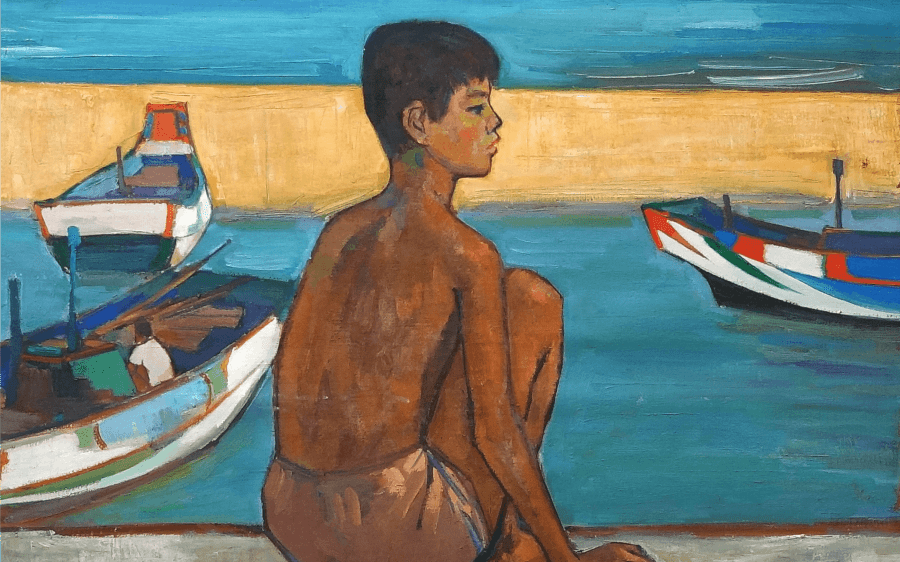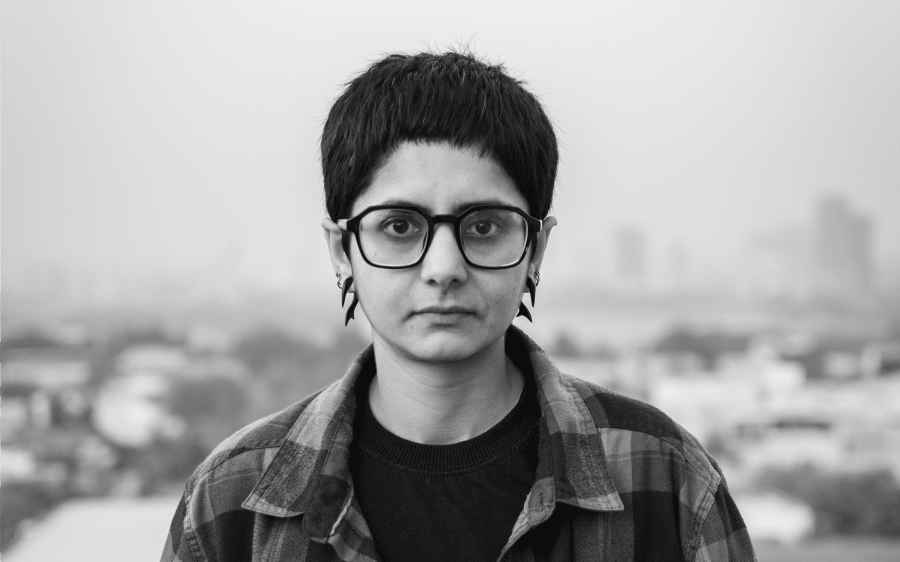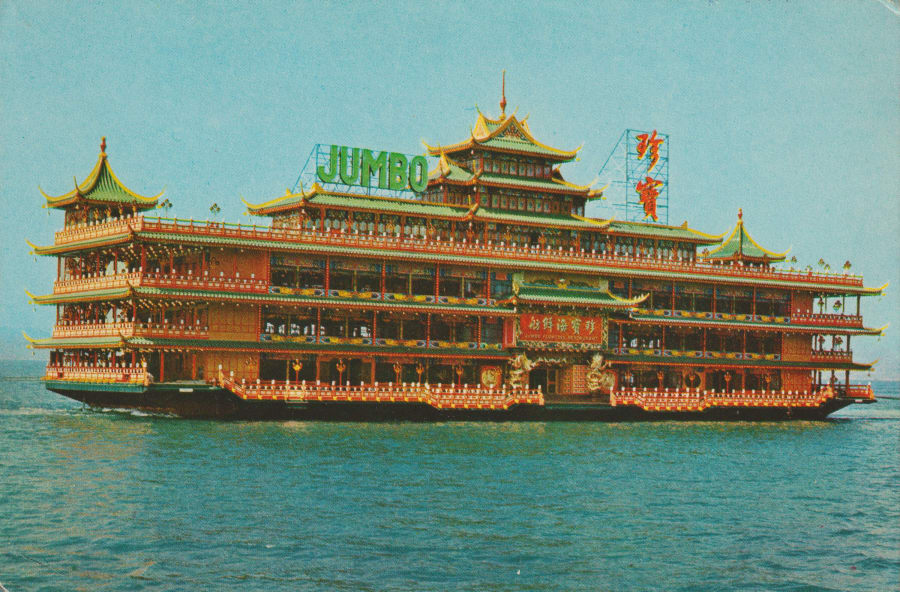The New Ink Movement in Hong Kong, which revolutionized traditional ink art by integrating modern concepts and techniques, has had a profound and lasting impact on Hong Kong’s art scene. Spanning the 1960s to the 1980s, the movement was closely linked to the drastic political and sociocultural changes that occurred in China in the 20th century. As a British colony, periods of severed or restricted ties with the Chinese mainland saw Hong Kong shift its cultural moorings towards Western Europe and North America. Within this context, artists charted a unique trajectory that distinguished itself from traditional Chinese ink painting while still acknowledging its roots, emphasizing individual expression over political, social, and historical dogmas.
The foundational bedrock for Hong Kong’s New Ink movement was laid in the first half of the 20th century, marked by successive waves of migration from mainland China to Hong Kong. These migrations brought artists and intellectuals to the city, who were engaged in the fervent debates and reforms taking place within the realm of guohua – a term coined to demarcate Chinese painting from its Western counterpart. Artists from across China established an array of calligraphy and Chinese painting societies in Hong Kong that represented different viewpoints, including that of the Lingnan School, a Cantonese style of romantic realism, influenced by early 20th-century modern Japanese painting. Many artists, such as Chao Shao-an (1905-1998), a second-generation master of the Lingnan School, were active in multiple groups, laying the groundwork for an inclusive and fluid approach to ink art that continued to evolve.
In 1962, the inauguration of the City Hall Art Gallery and Museum, now the Hong Kong Museum of Art, provided a platform for artists like Lui Shou-Kwan (1919-1975) to showcase their works. Widely regarded as the founder of the New Ink Movement, Lui arrived in Hong Kong from Guangzhou in 1948 and began to rekindle abstract and expressionistic elements within the ink tradition through his acclaimed ‘Zen paintings’. The lotus, a symbol of moral integrity in Chinese culture, became a recurring motif in paintings defined by bold color washes and strokes on paper. Beyond his own practice, Lui taught Chinese painting and history at the University of Hong Kong and the Chinese University of Hong Kong. Those who studied with Lui include renowned artists Irene Chou (1942-2011) and Wucius Wong (b. 1936). Some of his students formed the In Tao Art Association in 1968 and later the One Art Group in 1971 to advocate the New Ink Movement.
Another pioneer in New Ink art, Liu Kuo-sung (b.1932), made his way to Hong Kong from Taiwan in 1971, assuming a teaching role at the Chinese University of Hong Kong until his retirement in 1992. As chair of the Department of Fine Arts from 1972 to 1976, Liu played a pivotal role in advancing the pedagogy of modern ink painting, developing courses that delved into Chinese traditions while introducing Western concepts and techniques. Liu’s own painting practice is an amalgamation of traditional and modern methods. He has made his own customized paper, explored the abstract expressionist forms embedded into Chinese brushwork, and experimented with techniques in mark-making on paper, as seen in the ‘Space’ series inspired by the Apollo space missions. Exhibiting and lecturing worldwide, Liu’s influence extends beyond Hong Kong, permeating mainland China’s experimental ink painting movement in the 1980s that reconsidered the potential of traditional ink in contemporary contexts, as embodied in the unconventional works of artists such as Gu Wenda (b.1955) and Xu Bing (b.1955).
The New Ink Movement deeply influenced subsequent generations of artists in Hong Kong, particularly those born after World War II. An exemplar of this legacy is Kurt Chan (b.1959), who graduated from and later began to teach at the Fine Arts Department at the Chinese University of Hong Kong, alongside Liu Kuo-sung, in the 1980s. Chan has made significant contributions to the development of contemporary art in Hong Kong. As a teacher, he nurtured generations of artists, including a cohort of painters that emerged in the early 2000s, such as Lam Tung Pang (b.1978), who participated in ‘Legacy and Creations’, an exhibition composed of two parts, ‘Ink Art vs Ink Art’ and ‘Art vs Art’, organized by the Hong Kong Museum of Art in 2010 for Shanghai Expo, with works spanning calligraphy to moving images that located New Ink’s legacy within the context of an expanding field of contemporary art in Hong Kong.
Chan is highly regarded for his poetic mixed-media installations, which incorporate found objects from daily life that invite diverse interpretations. More recently, he has incorporated his calligraphy training into paintings, exploring the intersection between semantics and aesthetics in Chinese characters. Unlike traditional Chinese painters who often refer to their practice as ‘writing paintings’ (寫畫 xiehua), Chan perceives calligraphy itself as a form of painting. Logographic words such as ‘電 (electricity)’ and ‘脈 (pulse)’ are deconstructed into individual stroke elements in impactful acrylic paintings on canvas that integrate the visual languages of Euro-American abstraction and pop art.
With its interplay of forms, materials, and ideas that meld Chinese and international styles, the influence of the New Ink Movement in Hong Kong persists in the works of a new wave of artists working today. Chan Kwan Lok's (b.1992) meticulous brush technique or gongbi practice, expands on the line’s fundamental significance in the Chinese painting tradition, where symbolic strokes are used to represent objects, emphasizing individuality over scientific accuracy. Myriad forms found in the natural world find their way into Chan’s recent monochromatic ink paintings, which draw from the artist’s experiences hiking in Hong Kong and elsewhere. Living in an urban environment, Chan seeks to close the distance between the city and nature by creating whimsical compositions that imbue natural elements and ordinary objects with personality and emotion.
Bouie Choi Yuk Kuen (b.1987) employs techniques reminiscent of traditional ink-wash landscapes, layering midnight blue washes and deliberate brushwork on wood panels rather than conventional paper or silk. Choi incorporates identifiable details from recent events in Hong Kong onto exposed wood grain, providing multifaceted perspectives and overlapping temporal dimensions. Utilizing repurposed materials including church pews and floorboards, Choi, having learned from skilled woodworkers, adds a physical dimension to reflections on the changing city. These compositions capture the New Ink Movement’s continuing resonance in Hong Kong, as artists working with the ink art tradition continue to respond to the ongoing cultural interplay that defines an ever-evolving and kaleidoscopic genre.
'Water Thoughts and Mountain Visions', a solo exhibition of works by Wucius Wong, will be presented by Alisan Fine Arts in Hong Kong from 22 March to 16 May 2024.
Kurt Chan is represented by gdm (Hong Kong) and Hanart TZ Gallery (Hong Kong)
Chan Kwun Lok and Bouie Choi Yuk Kuen are represented by Grotto Fine Art (Hong Kong).
Irene Chou is represented by Alisan Fine Art (Hong Kong, New York) and gdm (Hong Kong).
Lam Tung Pang is represented by Alisan Fine Art (Hong Kong, New York), gdm (Hong Kong) and Hanart TZ Gallery (Hong Kong).
Liu Kuo-sung is represented by gdm (Hong Kong) and Hanart TZ Gallery (Hong Kong).
Lui Shou-Kwan is represented by Alisan Fine Art (Hong Kong, New York).
Wucius Wong is represented by Alisan Fine Art (Hong Kong, New York) and Hanart TZ Gallery (Hong Kong).
Kurt Chan, Chan Kwun Lok, Irene Chou, Lam Tung Pang, Lui Shou-Kwan and Wucius Wong will be on view at Art Basel Hong Kong 2024
Vivian Poon is an artist and researcher.
Caption for full-bleed image: Installation view of Bouie Choi Yuk Kuen's "Here and there". Courtesy of the artist and Grotto Fine Art.
Published on February 20, 2024.


